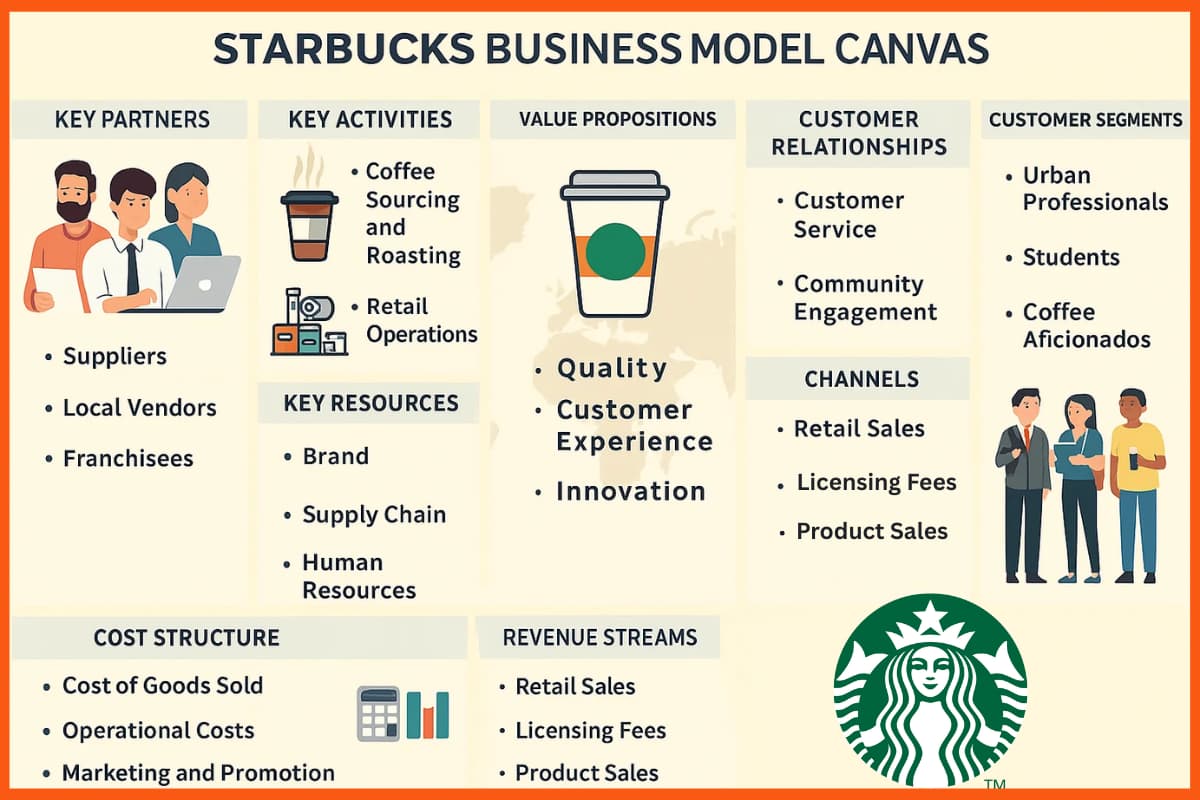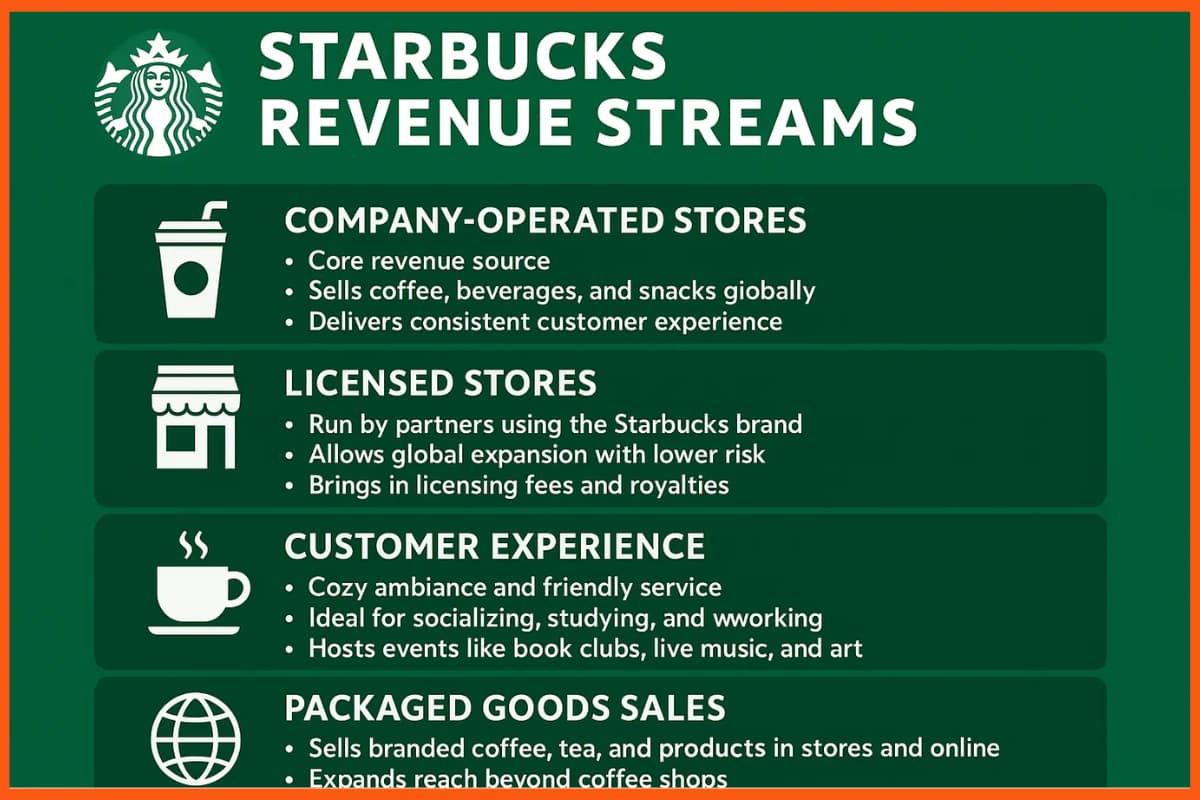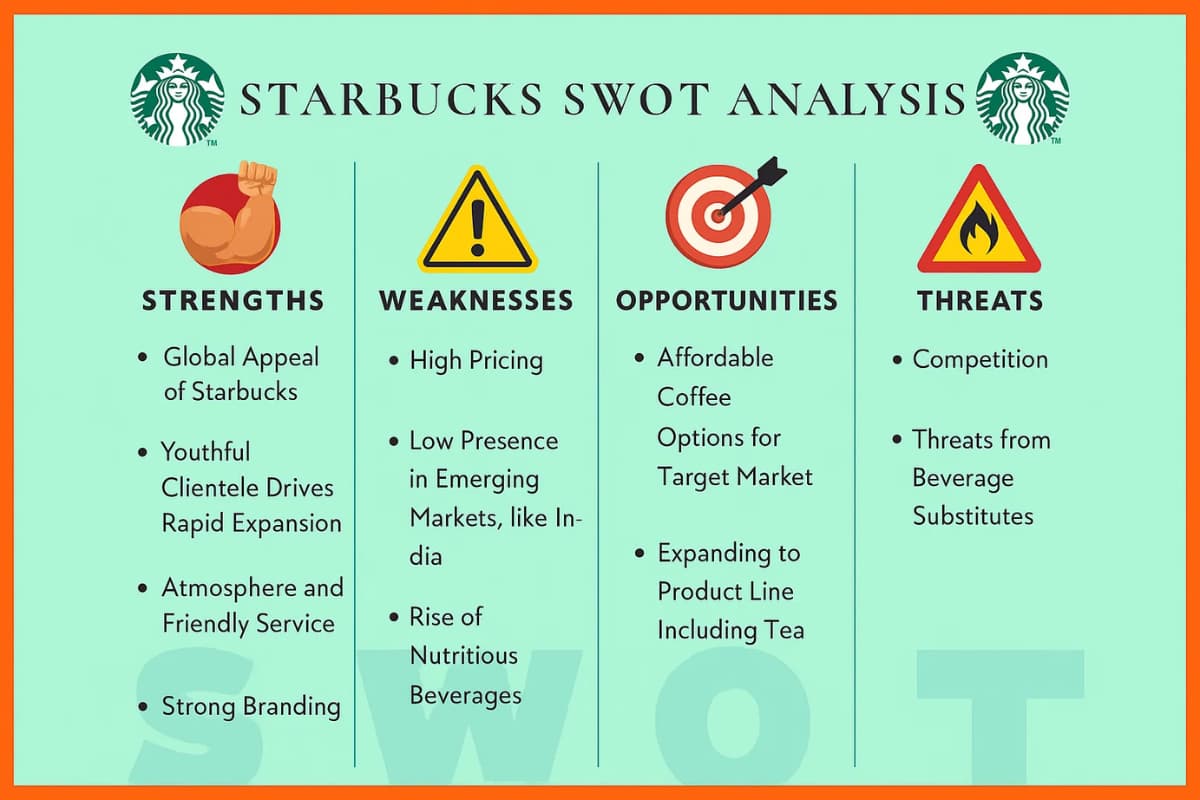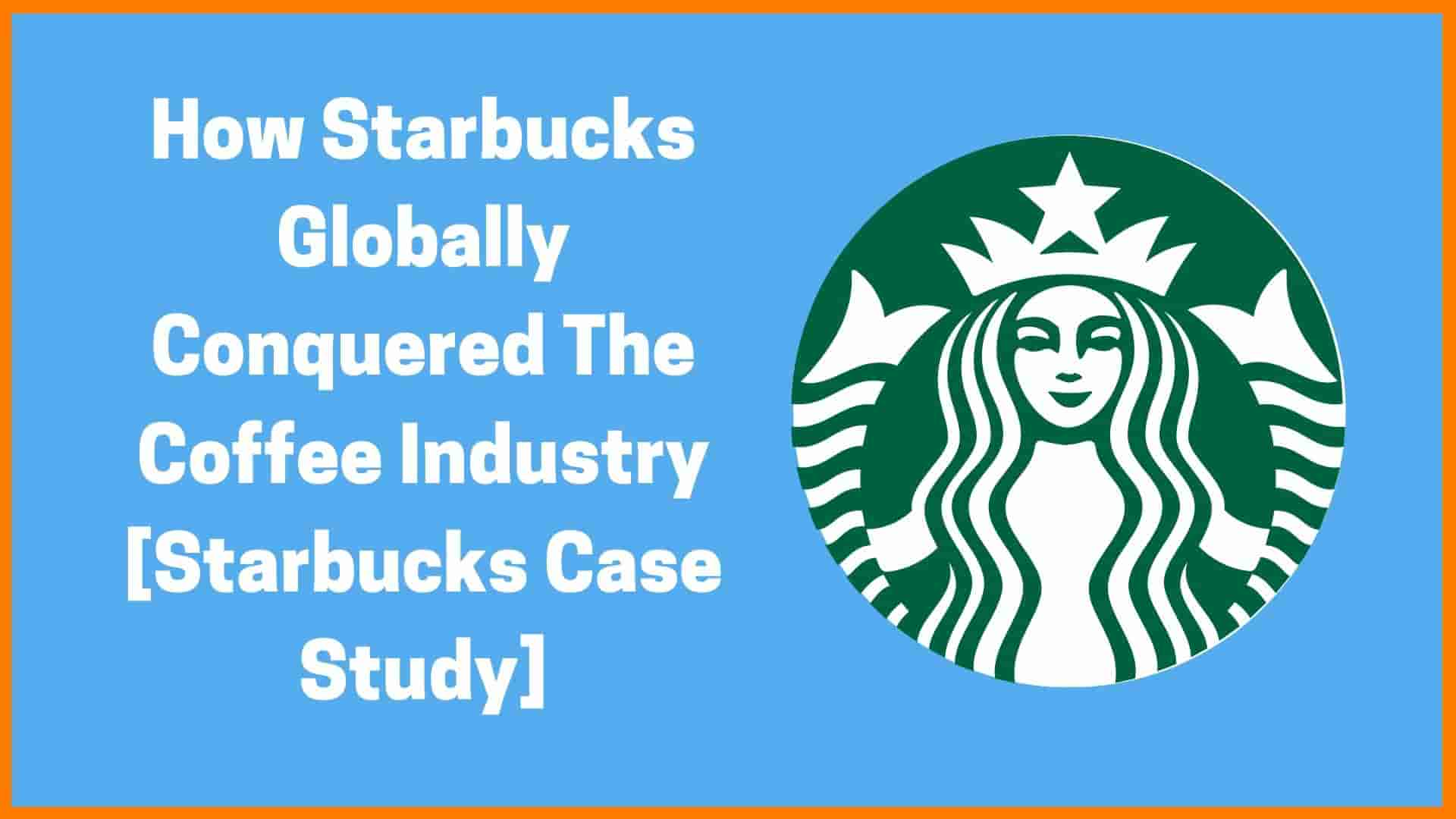Thinking about coffee? Yeah, me too! And when it’s about coffee, no one can beat Starbucks! The most delicious American coffeehouse and company. But what keeps this company incredibly successful?
So, to bring a better perspective to the business model of Starbucks, we have presented this article for you. Starbucks was based in Seattle, Washington, and started to nurture people with the pleasure of coffee at a time. And today, this coffeehouse is established in more than 38,000 places across the globe.
Starbucks is a choice for all! To find out what makes a company successful on a global scale, this piece will take a close look at its business ecosystem. Through this article, we will get to know all the essential strategies of Starbucks’ business model and how the company operates and makes money. We will discuss the strategies, plan, and revenue model. But most importantly, we will know what’s unique about the Starbucks business model that keeps it at the top. Let’s get started!
About Starbucks
The American-based multinational chain of coffeehouses, Starbucks, is headquartered in Seattle, Washington. Starbucks is responsible for the utmost coffee culture in the United States.
The coffeehouse was founded by Jerry Baldwin, Gordon Bowker, and Zev Siegl in 1971 (around 50 years ago). Starbucks was widely welcomed by Americans in their coffee culture. And now, Starbucks is well-established in around 38,038 places across the world, as of 2024. It serves over 83 countries worldwide. Its headquarters are in Seattle, USA.
Starbucks is well known for serving utterly delicious hot and cold drinks, whole-bean coffee, various instant flavoured coffee, including espresso, latte, and others. It also serves loose-leaf teas such as Evolution Fresh juices, Frappuccino, and many others. La Boulange pastries and other snacks as well. Moreover, Starbucks offers tons of different customer-based offers like free Wi-Fi and many others.
In 1971, on the cobblestone streets of Seattle’s iconic Pike Place Market, Starbucks was launched. In this same spot, Starbucks originally welcomed visitors with the promise of freshly roasted coffee beans, tea, and spices sourced from all corners of the globe. Its headquarters are in Seattle, USA, and the company was founded by Gerald Baldwin, Gordon Bowker, and Zev Siegl. There are currently over 38,038 outlets spread out over the globe.
Where Does Starbucks Operate?
As of 2025, Starbucks operates in around 80–83 countries with approximately 32,000+ stores worldwide.
Here’s a more detailed breakdown:
- United States: Over 17,000 company-operated stores as of June 2025.
- China: Around 7,700 company-owned stores, with a total push toward 9,000 by the end of 2025 .
- Other key markets:
- Japan: ~1,800 stores
- South Korea: ~1,980 stores
- Canada: ~1,483 stores
- United Kingdom: ~1,354 stores
- Indonesia: ~603 stores
- Latin America & Caribbean: ~1,700 licensed stores.
- Other regions (EMEA, Asia, etc.): Thousands more, with a focus on Europe, the Middle East, Africa, including a major footprint via local franchise partners like Alsea.
Key Products and Services of Starbucks
Starbucks mainly focuses on better interaction with its customers. Therefore, it offers its key services, such as communication, for a better connection with audiences. The bond between customers and the coffeehouse becomes very strong. And Starbucks always gets the best relationship throughout.
This also encourages a calm and relaxing environment inside Starbucks’ stores. They aim to touch the inner soul of their customers. And in such a manner, the consumers always come back for more coffee and snacks.
Target Audience of Starbucks
The world-famous chain of coffeehouses, Starbucks, targets its audience through demographic segmentation. It mainly targets people aged 25-44 years. This rounds up around half of the total business revenue.
The next large target group is young adults around the age of 18-24 years. Through these major groups, Starbucks earns a great source of revenue. And these together bring around 40% of Starbucks’ total sales.

Starbucks Business Model
A collection of concepts that define Starbucks and its place in the market forms the basis of the company’s business model. Providing first-rate goods and services, building strong communities, and giving customers something truly special are the fundamental elements of these concepts. Starbucks has succeeded in attracting and retaining customers by emphasising these features. It offers multiple beverages are available, including hot and cold drinks, VIA, coffee made from whole beans, tea made from entire leaves or loose leaves, lattes, fresh juices, Frappuccino drinks, and more.

The above image shows the business model canvas of Starbucks in detail.
Starbucks’ business model is well designed to make the business work, and also, how it can make more profit. Starbucks gathers its value through incredible customer interaction and experience.
It also sells a variety of foods such as cakes, yoghurt, salads, pastries, and more. By popularising darkly roasted coffee, Starbucks has set itself apart from other coffee firms. Starbucks’ usage of automated espresso equipment sets them apart from other coffee producers. Coffee producers and roasters are integral parts of Starbucks’ business plan.
When it comes to globalising a business, suppliers are essential allies. In order to guarantee a steady supply of high-quality coffee goods, it interacts with farmers, roasters, and shippers. In the case of items other than coffee, it collaborates with a number of regional, state, and local vendors. Starbucks’ business model relies on a distribution network that includes both company-operated and licensed locations to sell its products. In addition to these channels, it sells its products through warehouse clubs, specialty stores, grocery stores, and supermarkets. Starbucks business plan focuses on expanding company-owned and licensed stores, enhancing customer experience, and growing packaged product sales globally.
Starbucks gives people the pleasure of drinking coffee. It creates a calm and relaxing environment for its customers with great quality beverages in its coffeehouses. Starbucks has always been pretty creative in its business methods and strategies.
It offers instant, on-time delivery to its customers consistently. Now that we have the basic idea of the business model of Starbucks, let’s get our minds to what is unique about its business model and how it actually makes money.
What Is Unique About the Business Model of Starbucks?
Starbucks has opted for the most creative and unique marketing strategies. It has received immense success through its business model and strategies. But the thing that makes the business model utterly unique is the Classic Logo, which works best to engage more loyal customers throughout. The concept of the logo is to gather a huge audience base.
The other thing is how it presents its advertisements to its customers. With its store, modern cup design, digital content, and many others, it provides customers with a feeling of warmth and comfort. That’s why the audience connects more with Starbucks.

How Starbucks Makes Money | Starbucks Revenue Model
Starbucks’ company-operated outlets generate the bulk of the company’s income. Starbucks sells coffee, drinks, and snack items in its thousands of shops throughout the world, generating enormous revenue. Let’s find out the revenue streams through which Starbucks earns money.

Part of Starbucks’ success in this sector comes from its ability to provide a pleasant and uniform experience for customers everywhere. From the welcoming decor to the warm smiles of the coffee shop employees and the scent of freshly brewed coffee, Starbucks has perfected the art of creating a welcoming and comfortable environment for its customers.
In addition, the company-operated Starbucks locations are great for more than just getting a cup of coffee on the go. People now gather there for a variety of reasons, including socialising, studying, and working. Book clubs, live music, and art exhibitions are just some of the events that these establishments frequently host. Starbucks has succeeded in attracting and retaining customers by encouraging a feeling of belonging among its patrons.
Earnings for Starbucks come from both company-operated and licensed locations. Partners who have secured a licence to sell Starbucks products run these sites. By using a licensing strategy, Starbucks is able to go into new areas and serve more customers without taking on the entire financial and operational risk of running its outlets. Using its well-known brand name, Starbucks has expanded into packaged coffee, tea, and other goods that may be found in grocery stores and on the internet. Starbucks guarantees extensive distribution and maximum availability of its packaged products through partnerships with shops and online platforms.

USP of Starbucks
Customers will have a more favorable impression of Starbucks since they know they will enjoy what they purchase. Starbucks hosts events where customers can win t-shirts, mugs, and gift cards to celebrate the opening of new outlets. To boost their “brand awareness and brand loyalty,” Starbucks depends significantly on word-of-mouth publicity.
Starbucks Competitors
Starbucks faces competition from many other big and small coffee brands around the world. Here are some of the major ones:
- Dunkin’ Donuts – Famous for coffee and donuts, Dunkin’ started in 1950 and now has over 11,500 stores in 35+ countries.
- Costa Coffee – A popular British coffee chain founded in 1970, now owned by Coca-Cola.
- McCafé – McDonald’s coffee brand, launched in 1993, found in many McDonald’s locations worldwide.
- Tim Hortons – A top Canadian brand known for coffee and donuts, with over 4,600 stores across 13 countries.
- Peet’s Coffee – Started in 1966, Peet’s is known for its strong, freshly roasted coffee.
- Lavazza – A famous Italian coffee brand, founded in 1895, with cafes mainly in Europe.
- Café Coffee Day – India’s biggest coffee chain, started in 1996, with stores in parts of Africa, Europe, and Asia.
- Local coffee shops – Starbucks also competes with thousands of small, independent cafés all over the world.
So while Starbucks is a global giant, it’s always competing with both well-known brands and cozy neighborhood coffee spots.
Starbucks SWOT Analysis

Starbucks Strength
- Worldwide, the term “Starbucks” draws up images of coffee shops and positive consumer experiences.
- This company’s youthful clientele is a key factor in its dramatic rise to popularity and rapid expansion.
- Every Starbucks is known for its great atmosphere and friendly service.
- The name and symbol of Starbucks are easily remembered.
Starbucks Weakness
- Many people think that Starbucks’ menu prices are too high when compared to other chains and local businesses.
- In many emerging countries, including India, Starbucks is still on the rise.
- There has been a shift among health-conscious consumers towards beverages with a focus on nutrition.
Starbucks Opportunities
- To make coffee-based products more affordable for the target market, consider introducing more affordable alternatives.
- Starbucks can explore newer markets by targeting smaller towns and cities.
- Perhaps they might expand their product line to include more than just coffee. In many markets, such as the UK and India, tea is the beverage of choice.
Starbucks Threats
- Competitors include already-established coffee shops and fast food joints that sell coffee with other foods.
- Threats of substitute products and services include other beverage items, such as colas, teas, or liquids that are sold in retail stores.
Conclusion
Starbucks’ business model is quite known for its strategic deals and promotions. Their business model is utterly successful and always finds more customer engagement. It has a good impact through its licensed and company-operated stores. It works with simplicity and stands up to its ethics.
Today, Starbucks is a well-established company with a huge audience base. The business model of Starbucks shows that with utter determination and hard work, you can achieve everything within your reach.
FAQ
What is Starbucks business model?
Starbucks follows a premium café retail model, selling high-quality coffee, beverages, and food in a cozy, customer-focused environment. It earns revenue through company-owned stores, licensed stores, and branded products sold in retail channels.
Who is the founder of Starbucks?
Gordon Bowker, Jerry Baldwin, and Zev Siegl founded Starbucks in 1971.
Is Starbucks owned by Tata?
Tata Starbucks Private Limited is a joint venture company owned by Tata Consumer Products and Starbucks Corporation.
Who are the competitors of Starbucks?
The competitors of Starbucks include Costa Coffee, Tim Hortons, The Coffee Bean & Tea Leaf, Cafe Coffee Day and others.
How does Starbucks operate?
Starbucks operates through company-owned and licensed stores, selling coffee, food, and merchandise. It focuses on delivering a consistent, high-quality customer experience worldwide, both in-store and through packaged products sold in retail and online.
How many Starbucks are there in the world?
There are 40199 Starbucks, as of 2024 in the world.
How does Starbucks make money?
ChatGPT said:
Starbucks makes money by selling coffee, drinks, and food in its stores, earning from both company-owned and licensed outlets, and through packaged products sold in supermarkets and online.














